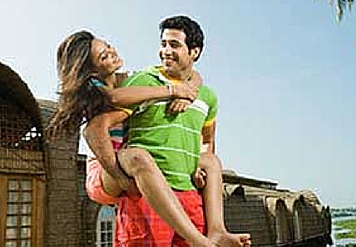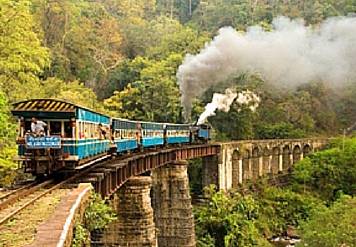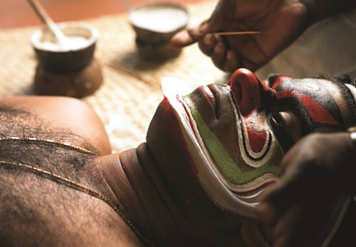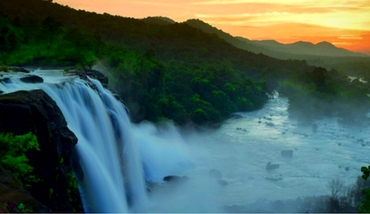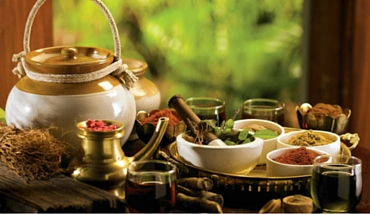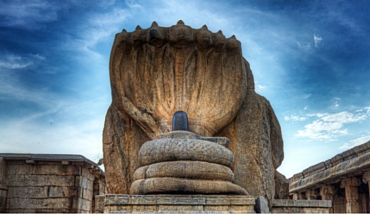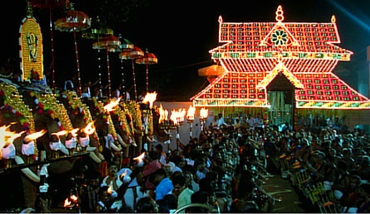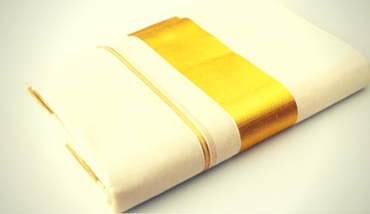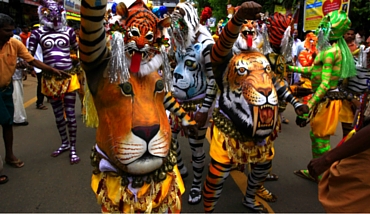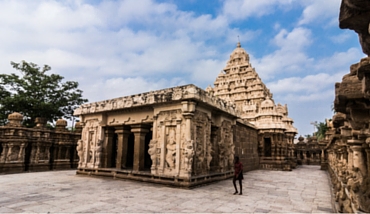- Aug 03,2016
- Post Comments
Why you shouldn’t miss out on experiencing Kerala's performing arts

Indus Holidays
Explorer Team
.jpg)
I’ll take you to the days of yore when the only entertainment of a Keralan rural landscape was the temple and church festivals that dotted a calendar year. The expressively charged eyes of the Kathakali performer, the energy of Theyyam with its invocations, the sound of the clash of swords of Kalaripayattu warriors, interactive performances of Ottam thullal, all added colour to rural village life.

This article is to bring out the uniqueness of traditional art forms you could experience in Kerala, how to plan for them and some exclusive experiences related to Kerala culture that you could consider while you plan your vacation here.

Today, these arts are the custodians of a culture that has been passed on through generations of Keralites. For travellers, performing arts makes the feel of a different land easy to sink in, it affords them a peep into history and a deep meaningful understanding of the Keralan social structure. In short, arts make the cultural connect happen.
Kathakali
.jpg)
Imagine a story enacted purely using hand gestures (mudras), facial expressions (rasas) and bodily movements. This 17th century art form is a highly stylized classical dance-drama with the confluence of dancing, acting, vocal and instrumental music. With just 24 basic hand-gestures, the Kathakali actor develops a language to communicate an entire story from Indian epics.

It takes 8-10 years of intensive training to acquire the skill for an artist to perform the demanding dusk to dawn Kathakali shows

For totality of the experience, you must directly see the intricate and elaborate make up procedure. It takes 3-4 hours for an actor to transform into the character you see on stage. Decorative headgear made of red and green stones, painted face with a chutti made of rice paste forms the face of the character. The upper torso is elaborately decorated with ornaments and the umbrella white skirt enhances the stage presence of the gods they depict.
Experiencing Kathakali:
With Kathakali becoming the face of Kerala tourism, it is surely something you should treat yourself to when you come to Kerala. Evening shows in any of the popular tourist spots with guided presentations are available for travelers to experience this art form.
Kalaripayattu
.jpg)
Kalaripayattu, the mother of all martial art forms, is all about achieving ultimate co-ordination of the mind and body. A special feature is the training in ‘Marma’, the art of activating the 107 energy points in the body. This makes the practitioner not only a warrior but also a self-healer. Besides the swords and daggers the warriors are also trained in a unique weapon called ‘Urumi’ - a lethal flexible sword that can be concealed as a waist belt. Physical training along with the specialised indigenous medical practice (Ayurveda) completes the warrior.

This martial art tradition is believed by historians to be one of the oldest fighting systems in existence.

Experiencing Kalaripayattu:
Evening shows in any of the popular tourist spots with guided presentations are available for travelers to get introduced to Kalaripayattu. It you want a more authentic experience you could consider training in the martial-art along with Ayurvedic treatment.
Kalaripayattu and Ayurveda in an erstwhile Kerala palace
.jpg)
Rs.15000+
Per Room (min)
Kalari Kovilakam
How would if feel like to experience Ayurveda, have exposure to the martial art system Kalaripayattu and all this with the grace and scale of 19thcentury palace living?
Good For: Boutique Stay Lovers, Health travel
Best Times: November - February
Visit
Duration: 14 days minimum for ayurveda
This is the ultimate concept of slow holiday with a regal theme to it. Not only can you watch the experts at play, you can even take a crack at Kalaripayattu yourself!
Activities at Kalari Kovilakam
- Regular training & demonstration sessions in Kalaripayattu, held in a traditional covered pit arena on the grounds. It adds to the effectiveness of your ayurveda treatment.
- The healing touch of pure ayurveda, personalised treatment based on body type
- Pure vegetarian food is prepared in brass, iron or clay vessels only based on a pure Ayurvedic kitchen principles
- Enjoy the evening in house with gathering, dance and musical performances
- The concept of the palace is to give you chance start afresh, do bring your favourite books and experience a different lifestyle.
Theyyam
.jpg)
Theyyam which is also called Kaliyattam is a ritualistic dance predominantly seen in north Kerala (Malabar region). It is essentially an art form of the economically suppressed sect of people who were not given the opportunity to read about hindu sastras. With its special headgear, crowns, vibrant body painting, ornaments and elaborate designed garments, Theyyam makes for a colourful visual.

Theyyam performers are believed to invoke the spirit of God and devotees seek blessings for the wellbeing of their family

Experiencing Theyyam:
This high energy pulsating performance with drums is generally conducted in the village area surrounding the local temple. They are held by village clan groups pooling resources together to conduct the event year after year. You will have to join local temple festivities in North Kerala to see authentic Theyyam.
Can we interest you in a journey which takes you to the times of the royals and feudal homes of Kerala?
Panchavadyam & Chendamelam
.jpg)
The wide range of native musical instruments of Kerala together form unique notes and melodies. The Panchavadyam is a combination of 5 instruments – 3 percussion instruments (Thimila, Maddalam, Edakka) and a cymbal and a horn. A panchavadyam performance takes hours, with a pyramid-like rhythmic structure in which the instruments go through five musical stages, or peaks. The Chendamelam is played with Chenda, Kombu and Kuzhal.

This is a must experience for the vigour and energy as the tempo steadily progresses from slow to reach the crescendo

Experiencing Panchavadyam
This art form is generally used for giving the traditional Kerala style welcome. The best place to witness these arts in full vigour and energy would be at the local temple festivals.
Mohiniyattam
.jpg)
Mohiniyattam is a gentle and graceful semi-classical dance form which has love and devotion to god as its theme. 'Mohini' means seductive enchantress who captures the desire of the onlookers. Songs of love for Shri Krishna or Vishnu sung in classical Carnatic in the Sopanam style form the base for this art. Danseuses convey this love through body postures, footwork and slow but graceful flowing movements of the hand.

One of the 4 classical dance forms of India, Mohiniyattam has slow but graceful movements to express devotion to god

The dressing is the customary two piece, cream coloured, pleated saree with wide gold border called kasavu and traditional gold ornaments. The eyes are deeply lined to increase the effect of the dancer's expressions and hair is tied into a bun which is encircled by jasmine flowers.
Kerala Kalamandalam - the helm of arts
.jpg)
The Kalamandalam, founded in the 1930s, came as part of the cultural renaissance to revive indigenous art in India during the colonial rule. Today it is the premier art and culture institute of Kerala imparting training and conducting performances in classical arts of Kerala like Kathakali, Mohiniyattam, Koodiyattam, Thullal and Panchavadyam. This institution which was founded by revered poet Vallathol Narayana Menon is situated in Cheruthuruthy (Thrissur district) on the banks of the Nila River. If you intend to learn some art form, the Kalamandalam offers specific courses.

Training at Kalamandalam adheres to the ancient Gurukula education system which calls for a deep teacher- student bond

‘A Day with the Masters’ – An authentic culture tourism experience
.jpg)
Rs.2500
Per Person
Kerala Kalamandalam
An exposure to the performing arts of Kerala with direct exposure to the masters in various art-disciplines. This is the premier cultural tourism experience in Kerala
Good For: Culture Lovers, Art Connoisseurs
Best Times: October - February
Visit
Duration: 2 days is ideal
How would it be if you could visit the places where the art forms are taught and learn about them directly from the masters? Kerala Kalamandalam opens its doors to art aficionados all over world with its popular “A Day with the Masters” programme.
The Programme
- The day begins with an audio visual presentation of the saga of Kalamandalam
- A presentation and visit to the Koothambalam - the traditional temple theatre
- Visit and Exposition of 10-15 Kalaris (teaching classes) – including Kathakali, percussion instruments, classical dances like Bharathanatyam and Mohiniyattam
- A presentation on Kerala Mural Painting and origin of dance
- A visit to the Art gallery in campus to see costumes, head gear, masks and jewellery
If you are interested in this day program, do book in advance and plan your visit to Cheruthuruthy so that you reach the place by 9:00 am.
Would like to enjoy a deep cultural experience in Kerala learning about art-forms, life by the backwaters and architecture?
Ottan Thullal
.jpg)
When an art form uses verses in plain language, that too with sarcastic wit it does make for an enjoyable show. Thullal a dance form devised by Kunjan Nambiar is a solo dance form characterized by its wit and humour. The marvel of this art form is that the raconteur and artiste is just this one actor and he manages both the roles together perfectly.

Fondly called Poor Man’s Kathakali, Thullal is distinct with its simplicity of presentation and its outspoken wit and humour

The dressing for this art in its most sophisticated form includes epaulets, gilded crowns, colourful skirts and painted face. The instruments used are maddalam and cymbals. The literary quality of this relatively new art cast it to fame
Tribal dance
.jpg)
The tribals who are side-lined by mainstream society live scattered in the jungles and hills of Kerala. There are about 35 different types of the tribals with each having their distinct dance traditions. It is amazing how these isolated communities take effort to preserve their customs untarnished by advancing waves of urban life. These dance forms are physical expressions of their joy, hopes and fears.

This dance is an expression of the inner most spirit of the tribals which makes it easy to connect with

Experiencing Tribal dance:
Community based eco-tourism initiatives in tribal hotspots like Thekkady, Wayanad, Parambikulam among others gives us a chance to see these art forms.
Other Unique Art forms in Kerala
Besides some of the most common art forms, there are many others which might be of interest to art connoisseurs. Some of them are still performed in their authentic style and can be experienced if one does the work to go in search of them. Here are some true gems which might not come up in a regular tourist itinerary.
Unique Traditional Arts
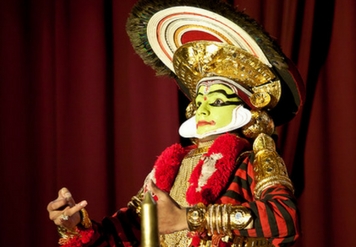
Koodiyattam
This Sanskrit theatre estimated to have survived for 2000 years is considered the mother of all dances. It has recently been recognized by UNESCO with the title- 'Masterpiece of Oral and Intangible Heritage of Humanity.'
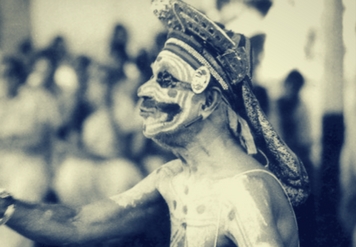
Chakyarkoothu
Chakyarkoothu is a blend of comedy, social satire and mime performed by a solo vidushakan (jester). It is an intellectual entertainment and social criticism is the core of the performance. The jester brings in contemporary topics on a base of puranic story telling.
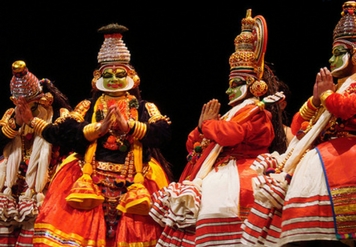
Krishnanattam
Krishnanattam is a 16th century folk and classical art which generally deals with episodes in the life of Lord Sree Krishna. It takes around 8 days to do a complete performance of Krishnanattam. Today, this art form is seen only the Guruvayoor Sree Krishna temple where people donate this performance as an offering to the god.
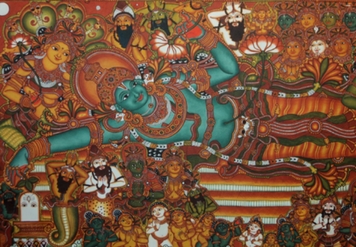
Mural Painting
Kerala stands next to Rajasthan in having the largest collection of murals based on ancient Indian mythology themes. The murals of Kerala bear the stamp of uniqueness in aesthetic composition and techniques. Most of these were painted between 15th and 19th centuries.
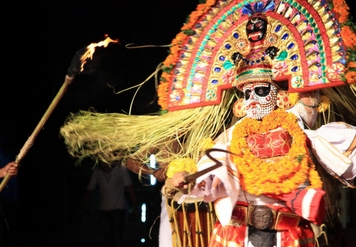
Mudiyettu
Mudiyettu is a ritual dance performed in some Kaali temples of Ernakulam and Kottayam districts (central Kerala). The dance celebrates the goddess's triumph over the demon Daarikan.Mudiyettu is performed by the Kuruppu or Marar who belong to the temple bound communities of Kerala.
General tips on performing arts
Many of the aforementioned art forms are related to temple festivals or other local festivities. So if you really want to explore them, plan well in advance and ask your tour planner to arrange accordingly. If experiencing performing arts is important for you then plan your trip between September and April when there are a lot of temple festivals and famous processions for Onam or Thrissur pooram.
So how do you feel about Kerala’s culture and performing arts? Chime in with your comments here. Happy traveling!
Related Tour Packages
Related articles
New Articles
-
1
Apr 23,2019
Nehru Trophy Boat Race 2019: Booking Options
-
2
Apr 19,2019
Nehru Trophy Boat Race: The essential guide
-
3
Jan 19,2019
Everything you need to know about an Ayurveda Holiday in Kerala
-
4
Aug 10,2018
Thinking about Kerala for your next holiday? Start right here!
-
5
Jul 09,2018
Ten secrets to a fascinating backwater experience: Discover it!
Send An Enquiry
WE ARE SOCIAL, LET’S CONNECT
